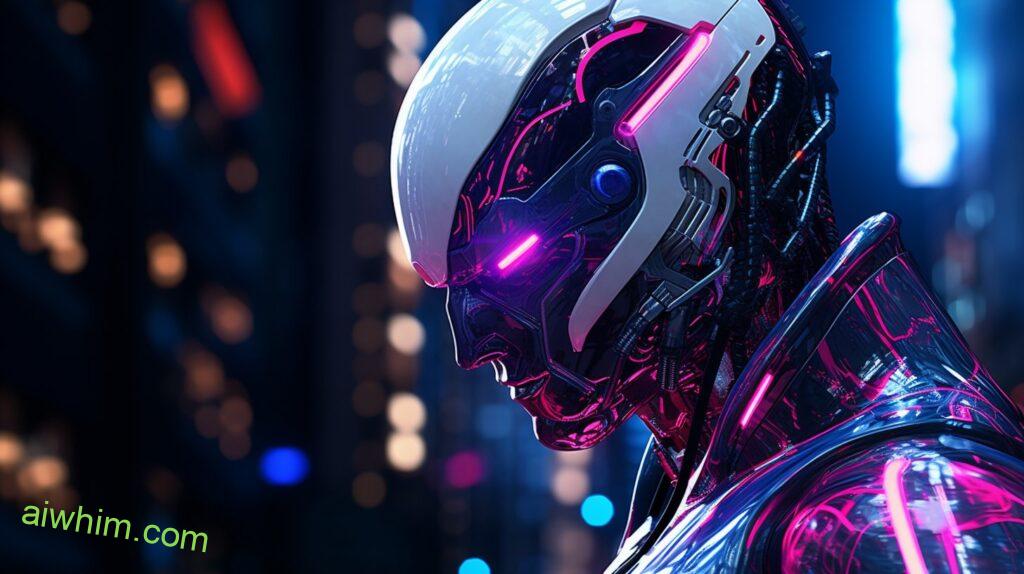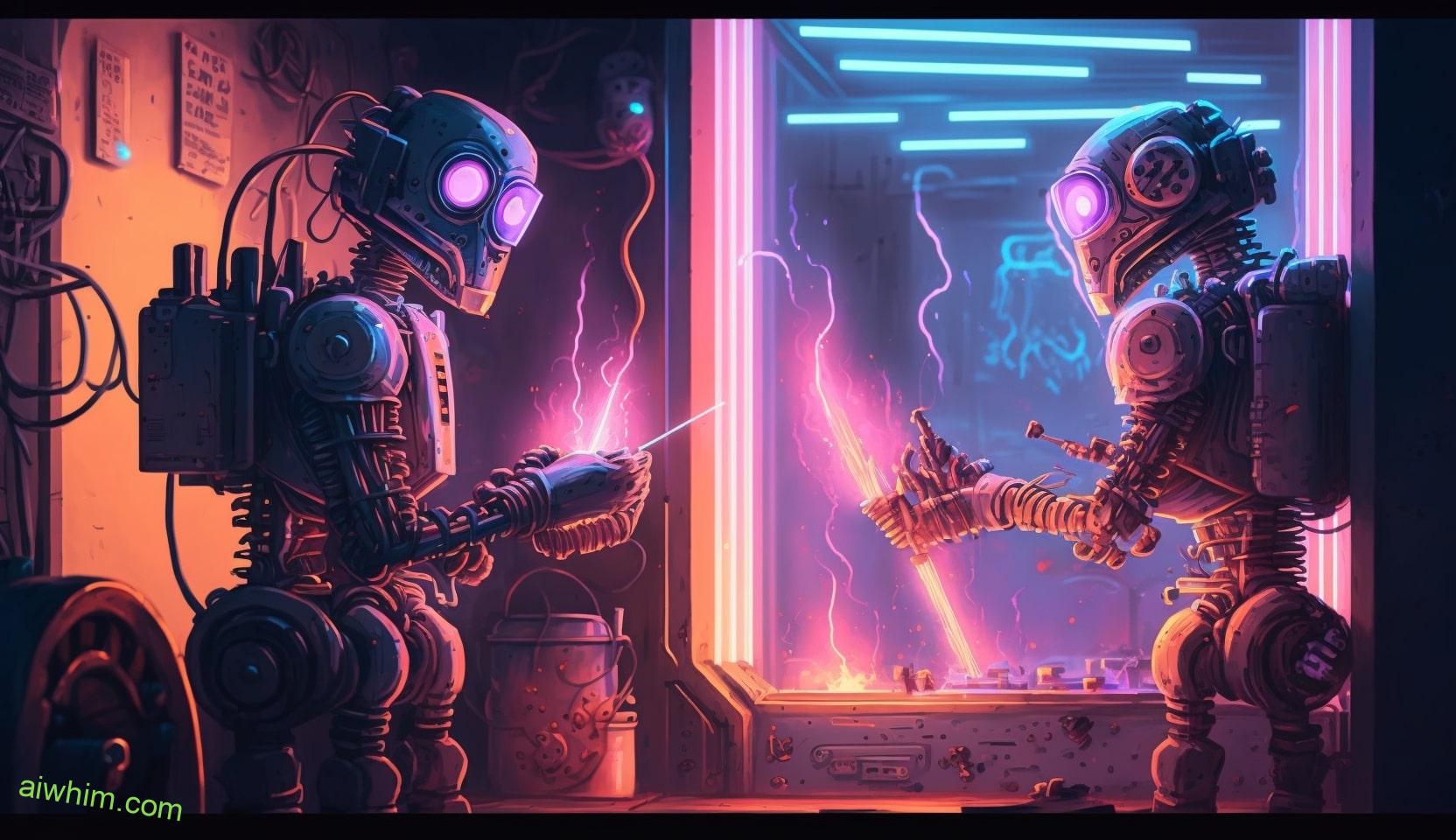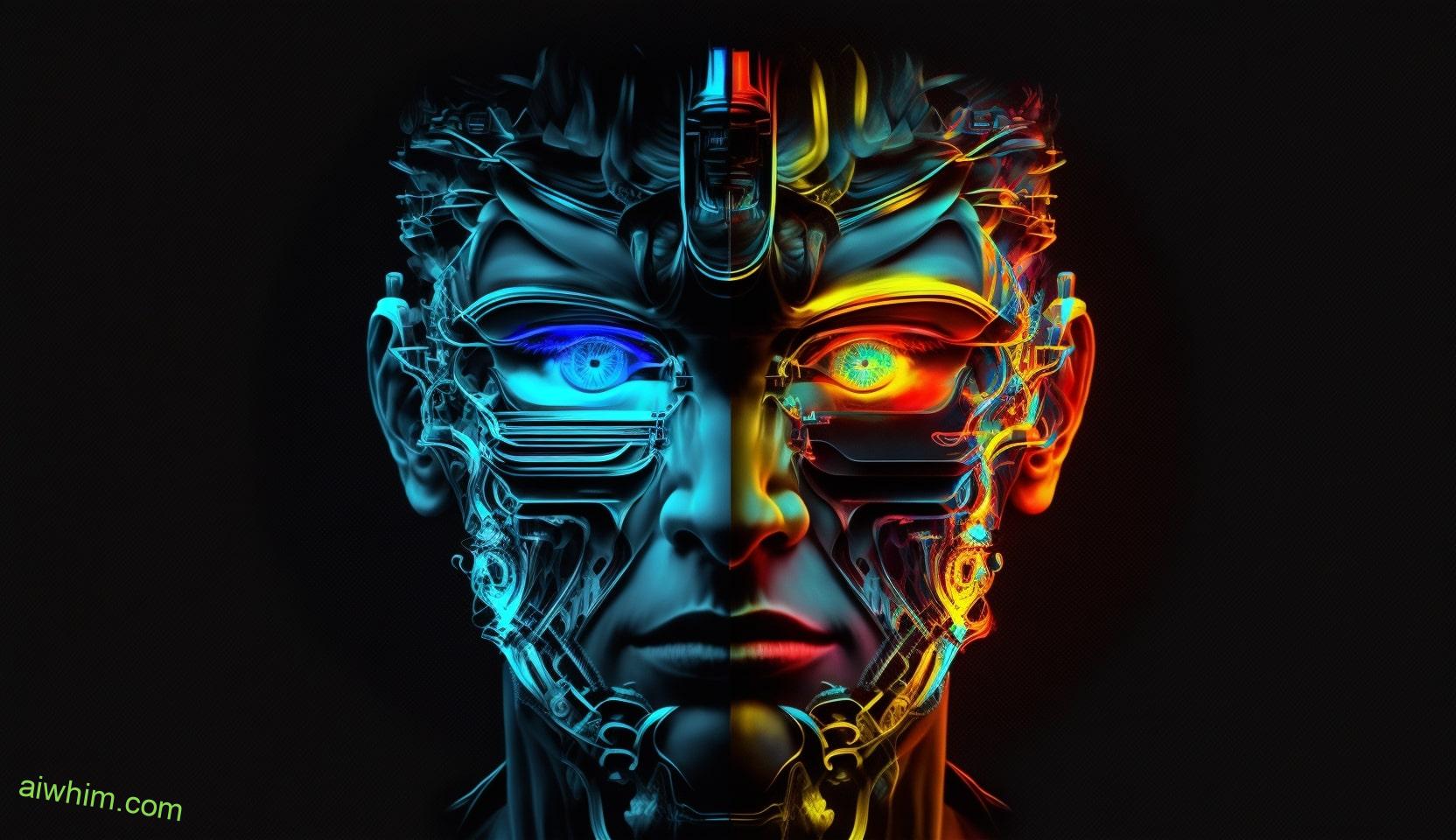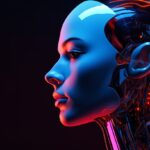Are you a roofer looking to stay ahead of the game in the ever-evolving job market? Well, hold on tight, because the rise of Artificial Intelligence (AI) in the roofing industry is causing quite a stir.
With AI technology making its way into various sectors, including construction, it’s no surprise that roofers are beginning to wonder how this new development will impact their livelihood.
In this discussion, we will explore the advantages and disadvantages of AI in roofing, its potential effect on employment, and how traditional roofing methods stack up against this cutting-edge technology.
So, buckle up and get ready to discover the future of roofing jobs in the age of AI.

Key Takeaways
- AI technology in roofing industry revolutionizes installation, maintenance, and inspection processes
- AI-powered drones can efficiently inspect and assess roofs, enhancing safety and accuracy
- AI algorithms analyze data to predict and prevent potential problems, leading to cost savings and improved efficiency
- While AI may automate certain tasks and raise concerns about job displacement, it also creates new job opportunities and requires upskilling in AI-related fields for roofers to remain competitive in the job market.

The Rise of AI in Roofing
As the construction industry continues to embrace technological advancements, the rise of AI in roofing is revolutionizing the way roofs are installed and maintained.
With the advancement in roofing technology, AI-driven solutions for roof maintenance are becoming increasingly popular. Imagine a world where your roof is constantly monitored and maintained without you having to lift a finger. AI technology has made this a reality.
Gone are the days of manual inspections and guesswork. AI-powered drones equipped with high-resolution cameras can quickly and accurately assess the condition of your roof, detecting any potential issues such as cracks, leaks, or damaged shingles. These drones can navigate even the most complex roof structures, providing a comprehensive view of your entire roofing system.
But it doesn’t stop there. AI algorithms analyze the collected data to identify patterns and predict potential problems before they become major issues. This proactive approach allows for timely repairs and prevents costly damage. AI-driven solutions also optimize the maintenance process by prioritizing tasks based on urgency and efficiently allocating resources.
Furthermore, AI technology enables real-time monitoring of your roof’s performance. Sensors embedded in the roofing material can detect changes in temperature, humidity, and other environmental factors. This data is then analyzed by AI algorithms to provide insights into the overall health of your roof, helping you make informed decisions regarding maintenance and repairs.
The rise of AI in roofing not only improves the efficiency and accuracy of roof installation and maintenance but also offers peace of mind to homeowners. With AI-driven solutions, you can trust that your roof is in good hands, allowing you the freedom to focus on other aspects of your life.
Embrace the future of roofing technology and experience the benefits of AI for yourself.

Advantages of AI in Roofing Industry
AI technology in the roofing industry offers numerous advantages that enhance efficiency and accuracy in roof installation and maintenance. Here are some key advantages of AI in the roofing industry:
- Enhanced Safety: AI-powered drones can be used to inspect roofs, eliminating the need for human workers to climb up and risk their safety. This not only reduces the chances of accidents and injuries but also ensures that the job is done quickly and efficiently.
- Improved Accuracy: AI algorithms can analyze data from various sources, such as satellite imagery, weather patterns, and building blueprints, to accurately determine the requirements for roof installation or repair. This eliminates the chances of errors and ensures that the job is done right the first time.
- Cost Savings: AI technology can optimize material usage, reducing waste and saving costs. By accurately estimating the amount of materials needed, companies can avoid overstocking and minimize expenses. Additionally, AI can help detect potential issues early on, preventing costly repairs in the future.
- Time Efficiency: AI-powered robots can automate certain tasks, such as removing debris or installing shingles, which significantly speeds up the process. This allows roofing projects to be completed in less time, enabling companies to take on more projects and increase their revenue.
The impact of AI in the roofing industry is undeniable. It revolutionizes the way roofs are installed and maintained, offering advantages that improve safety, accuracy, cost savings, and time efficiency. By embracing AI technology, companies in the roofing industry can streamline their operations, deliver better results, and ultimately provide customers with a more satisfying experience.

Disadvantages of AI in Roofing Industry
While AI technology has brought significant advancements to the roofing industry, there are also some notable drawbacks to consider. As a roofer in the AI era, you may face several challenges that can impact your work and livelihood.
One major disadvantage of AI in the roofing industry is the potential for job displacement. With the automation and efficiency that AI brings, there’s a concern that human roofers may be replaced by machines. This could lead to a decrease in job opportunities and increased competition for available positions. As a roofer, it’s important to stay updated with the latest technological advancements and acquire new skills to adapt to this changing landscape.
Another challenge faced by roofers in the AI era is the potential loss of craftsmanship and expertise. While AI can perform tasks quickly and accurately, it may lack the finesse and attention to detail that human roofers possess. Roofing is a skilled trade that requires precision and experience, which may be compromised if AI takes over certain aspects of the job. Maintaining the quality and integrity of roofing projects may become more difficult in a world dominated by AI.
Additionally, the costs associated with implementing AI technology in the roofing industry can be a significant disadvantage. AI systems require substantial investment in terms of hardware, software, and training. Small roofing businesses, in particular, may find it challenging to afford these technologies, putting them at a disadvantage compared to larger companies with more resources.
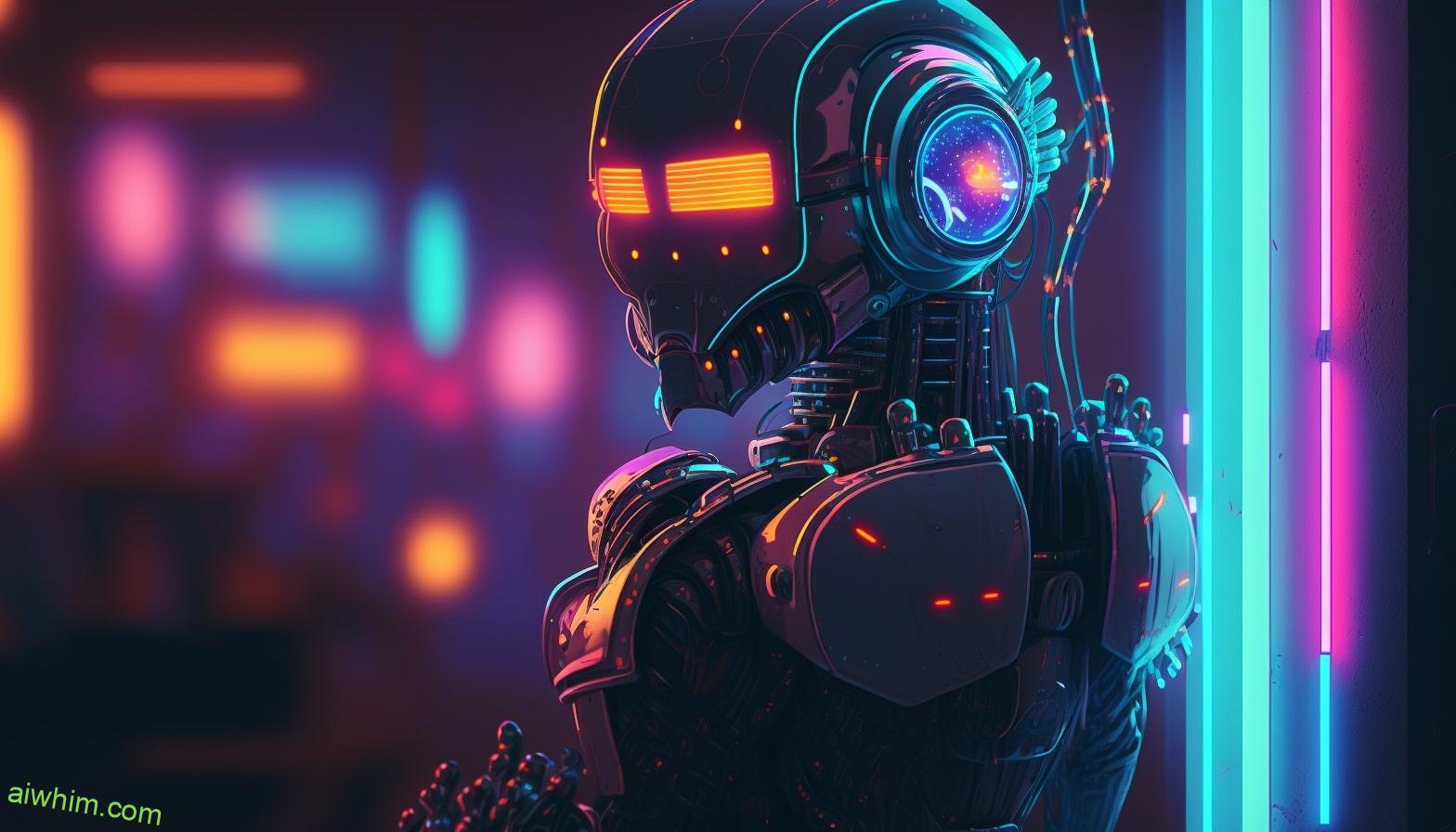
Impact of AI on Roofing Employment
Job opportunities and the structure of the roofing industry may undergo significant changes due to the integration of AI technology. As AI continues to advance, it has the potential to both displace and create jobs in the roofing sector.
Here are some key points to consider:
- AI job displacement: With the introduction of AI technology in the roofing industry, some tasks that were previously performed by human roofers may be automated. For example, AI-powered drones can be used for roof inspections, reducing the need for manual labor. This could potentially lead to a decline in employment opportunities for traditional roofers.
- AI training programs: To adapt to the changing landscape, it’s crucial for roofers to embrace AI technology and acquire the necessary skills to work alongside it. AI training programs can help roofers learn how to operate and utilize AI tools effectively. By upskilling themselves, roofers can remain competitive in the job market and take advantage of the new opportunities that AI brings.
- New job roles: While AI may displace certain tasks, it also has the potential to create new job roles within the roofing industry. For instance, AI specialists and technicians will be needed to develop, maintain, and troubleshoot AI systems. Additionally, there will be a growing demand for professionals who can interpret and analyze data collected by AI tools.
- Efficiency and safety improvements: The integration of AI technology in roofing can lead to increased efficiency and enhanced safety. AI-powered software can help with accurate material estimation, project planning, and even predicting potential roof issues. This can result in faster completion of projects and improved safety conditions for roofers.
As the roofing industry embraces AI, it’s important for both employers and employees to adapt and evolve. By understanding the potential impact of AI on employment, investing in AI training programs, and embracing new job roles, roofers can navigate the changing landscape and find success in the industry.
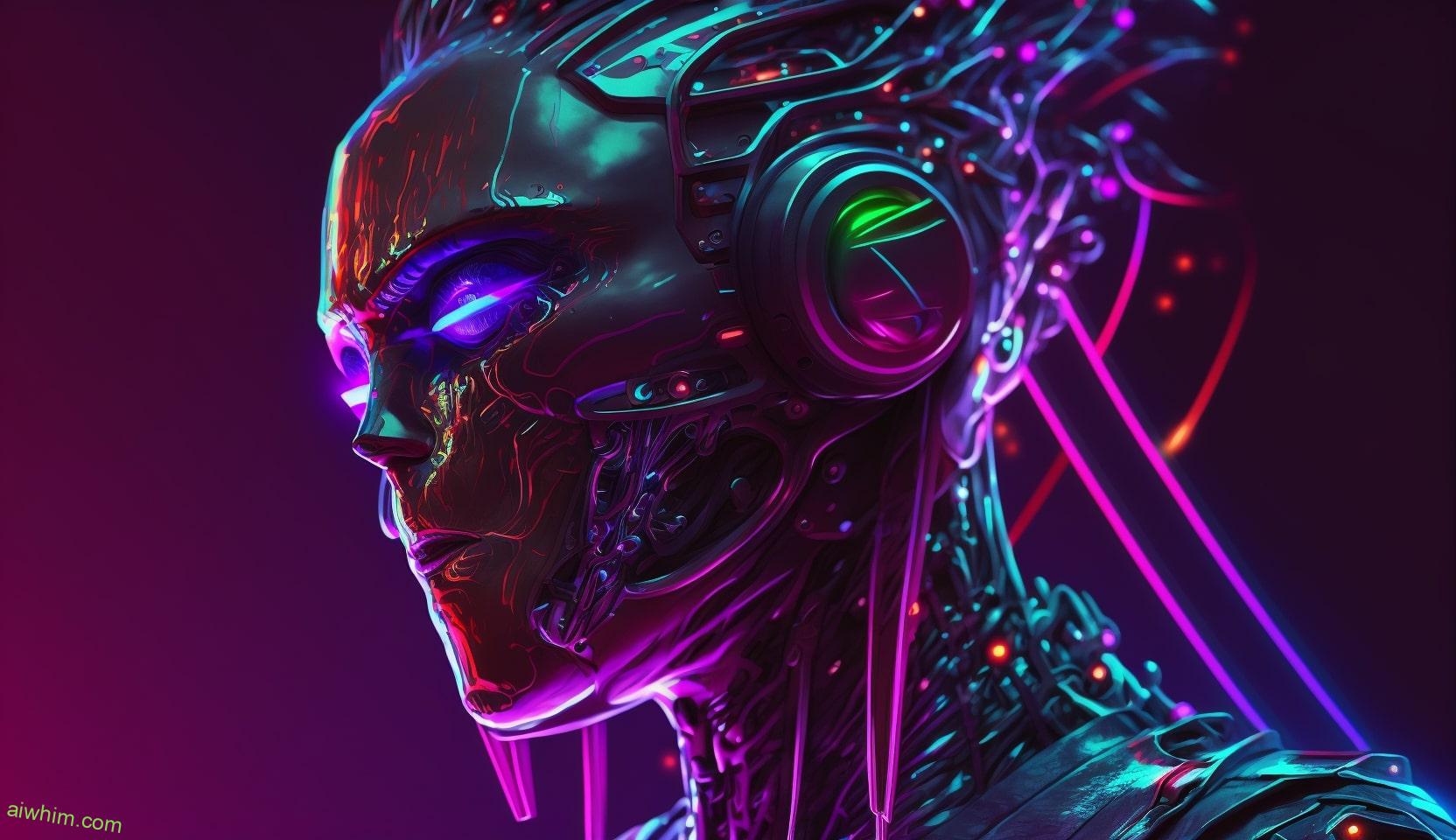
AI Technology Vs. Traditional Roofing Methods
The integration of AI technology in the roofing industry brings a new dimension to the age-old debate between traditional roofing methods and the potential benefits of AI. With recent AI advancements, there’s a growing interest in exploring how this technology can revolutionize the roofing industry.
Traditional roofing techniques have been used for centuries and have proven to be effective. However, they often rely on manual labor, which can be time-consuming and costly. AI technology, on the other hand, has the potential to streamline and automate various aspects of the roofing process.
One of the key advantages of AI in roofing is its ability to analyze large amounts of data quickly and accurately. By leveraging machine learning algorithms, AI systems can assess the condition of roofs, identify potential issues, and recommend the most suitable solutions. This can save time and resources by eliminating the need for manual inspections and reducing the risk of human error.
Furthermore, AI can enhance safety in the roofing industry. By using drones equipped with AI-powered cameras, roof inspections can be conducted remotely, minimizing the need for workers to physically access hazardous areas. AI can also assist in identifying potential safety hazards, such as weak structures or unstable surfaces, thereby preventing accidents and injuries.
Despite these advancements, it’s important to note that AI technology isn’t intended to replace human roofers entirely. Rather, it should be seen as a tool to augment and enhance their skills. Roofers can still bring their expertise and craftsmanship to the table, while AI technology can assist in improving efficiency, accuracy, and safety.

Skills and Knowledge Needed in the AI Era
To thrive in the AI era, acquiring a strong foundation in technological skills and knowledge is crucial. As AI continues to advance and reshape industries, it becomes increasingly important to stay ahead of the curve and adapt to the changing landscape.
Here are four key areas where your skills and knowledge need to be honed:
- AI skills: Investing time and effort in understanding AI technologies and algorithms will open up a world of opportunities. Learning how to develop, implement, and optimize AI systems will make you a valuable asset in the job market. Whether it’s machine learning, natural language processing, or computer vision, staying up-to-date with AI skills will keep you in high demand.
- Knowledge adaptation: The ability to quickly adapt and learn new technologies is essential in the AI era. With advancements happening at a rapid pace, being flexible and open-minded will help you navigate the ever-changing landscape. Embracing continuous learning and being proactive in acquiring new knowledge will set you apart from the rest.
- Data analysis: AI heavily relies on data, and being able to analyze and interpret data effectively is crucial. Understanding statistical analysis, data visualization, and data modeling will enable you to make informed decisions and provide valuable insights. Being proficient in data analysis will make you an invaluable asset in AI-driven organizations.
- Ethical considerations: With AI comes great responsibility. Understanding the ethical implications of AI and being able to navigate the ethical landscape is crucial. As AI systems become more powerful and influential, it’s essential to consider the ethical implications of their use. Developing a strong ethical framework will help you make sound decisions and contribute to a future that’s fair and just.

Adapting to the Changing Landscape in Roofing
In the ever-evolving world of roofing, adapting to the changing landscape is essential for success. As technology advances and AI starts to make its way into various industries, including construction, it’s crucial for roofers to embrace new strategies to stay relevant and secure future job prospects.
To adapt to the changing landscape in roofing, one key strategy is to invest in upskilling and learning new technologies. As AI becomes more prevalent in the industry, understanding how to work alongside automated systems and leveraging their capabilities can give roofers a competitive edge. By staying updated on the latest tools and techniques, you can position yourself as a valuable asset in a rapidly evolving field.
Another important aspect of adapting to the changing landscape is embracing sustainable practices. With growing environmental concerns, the roofing industry is shifting towards more eco-friendly materials and techniques. By incorporating green solutions into your work, such as using solar panels or implementing energy-efficient designs, you can attract a broader range of clients and contribute to a more sustainable future.
Networking and collaborating with other professionals in the industry is also crucial. By joining trade organizations, attending conferences, and participating in online forums, you can stay informed about the latest trends and innovations in roofing. Building relationships with other experts can lead to valuable partnerships and opportunities for growth.
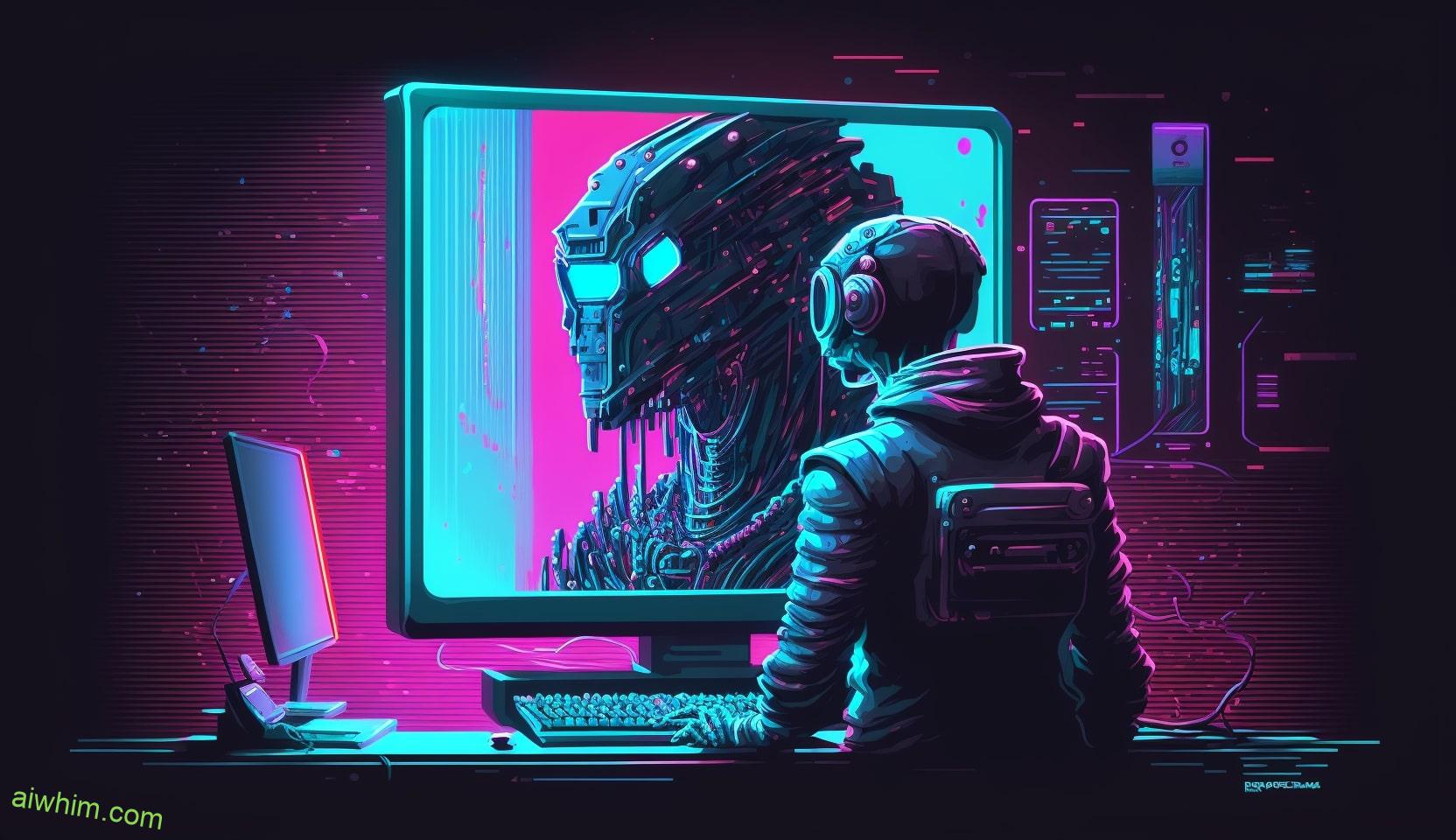
The Future of Roofing Jobs
As technology continues to advance, the future of roofing jobs is undergoing significant transformations. Automation in roofing is becoming increasingly prevalent, raising concerns about the future job prospects for roofers. However, it’s important to remember that technology is a tool that can enhance rather than replace human skills.
Here are some key points to consider:
- Collaboration between humans and machines: Automation in roofing can streamline processes and increase efficiency. With the help of robots and artificial intelligence, roofers can work alongside machines to complete tasks more quickly and accurately. This collaboration allows for a more productive and cost-effective approach to roofing projects.
- Emphasis on specialized skills: While automation may handle certain repetitive tasks, it also creates a demand for specialized skills. Roofers who possess expertise in areas such as advanced roofing systems, solar panel installation, and green roofing technologies will have an edge in the job market. By adapting to these emerging trends, roofers can secure their future job prospects.
- Opportunities in maintenance and repair: As roofs become more technologically advanced, there will be a need for skilled professionals to maintain and repair these systems. Automated roofing systems require regular inspections, maintenance, and troubleshooting. Roofers who are knowledgeable in the maintenance and repair of automated roofing systems will be in high demand.
- Focus on creativity and problem-solving: While automation can handle routine tasks, it’s still reliant on human creativity and problem-solving abilities. Roofers will need to think critically and adapt to new challenges that arise in the ever-evolving roofing industry. The ability to innovate and find solutions to complex problems will be key for future success.

AI Tools and Software for Roofing
AI tools and software revolutionize the roofing industry by enhancing productivity and accuracy. With the advent of AI-powered drones and machine learning algorithms, roofers can now efficiently inspect, assess, and repair roofs with ease.
Imagine a world where drones equipped with AI technology effortlessly fly over rooftops, capturing detailed images and data. These AI-powered drones can quickly identify any potential issues such as cracks, leaks, or damaged shingles. By using machine learning algorithms, these drones can analyze the data in real-time, providing accurate and comprehensive reports to roofers.
With AI tools and software, roofers no longer have to rely solely on manual inspections, which can be time-consuming and prone to human error. AI algorithms can detect even the smallest imperfections that might be missed by the naked eye, ensuring that every repair or replacement is done with precision.
Furthermore, AI software can assist roofers in planning and estimating roofing projects. By analyzing historical data and considering various factors such as weather conditions and material costs, AI algorithms can provide accurate cost estimates and project timelines. This helps roofers streamline their operations, reduce waste, and deliver projects on time and within budget.
In addition to enhancing productivity and accuracy, AI tools and software also improve safety in the roofing industry. By utilizing drones for inspections, roofers can avoid putting themselves in potentially dangerous situations. Moreover, AI algorithms can analyze data to identify safety hazards and suggest preventive measures, further reducing the risk of accidents.

AI’s Role in Improving Roofing Efficiency
By incorporating AI technology into your operations, you can significantly improve the efficiency of your roofing work. AI has the potential to revolutionize the roofing industry by streamlining processes and enhancing productivity.
Here’s how AI can help you in improving inspection and predictive maintenance:
- Automated Inspection: AI-powered drones equipped with high-resolution cameras can be used to conduct detailed inspections of roofs. These drones can capture images and videos, allowing you to identify any issues or potential areas of concern without the need for manual inspection. This not only saves time but also improves accuracy, as AI algorithms can analyze the data and provide precise insights.
- Predictive Maintenance: AI can analyze historical data and patterns to predict potential maintenance needs. By tracking factors such as weather conditions, age of the roof, and previous repairs, AI algorithms can provide early warnings and recommend proactive maintenance actions. This helps prevent costly repairs and ensures the longevity of the roof.
- Efficient Resource Allocation: AI can optimize the allocation of resources such as materials, equipment, and manpower. By analyzing data on project requirements, timelines, and available resources, AI algorithms can generate optimized schedules and resource plans. This minimizes waste, maximizes productivity, and improves overall project efficiency.
- Real-Time Monitoring: AI-powered sensors installed on the roof can continuously monitor its condition and detect any changes or anomalies. These sensors can measure parameters like temperature, humidity, and moisture levels, alerting you to potential issues in real-time. This proactive approach enables you to take immediate action, preventing further damage and reducing the need for costly repairs.
Incorporating AI into your roofing operations can bring numerous benefits, from improving inspection accuracy to predicting maintenance needs. Embracing AI technology allows you to work more efficiently, save time and money, and ensure the longevity and quality of your roofing projects.
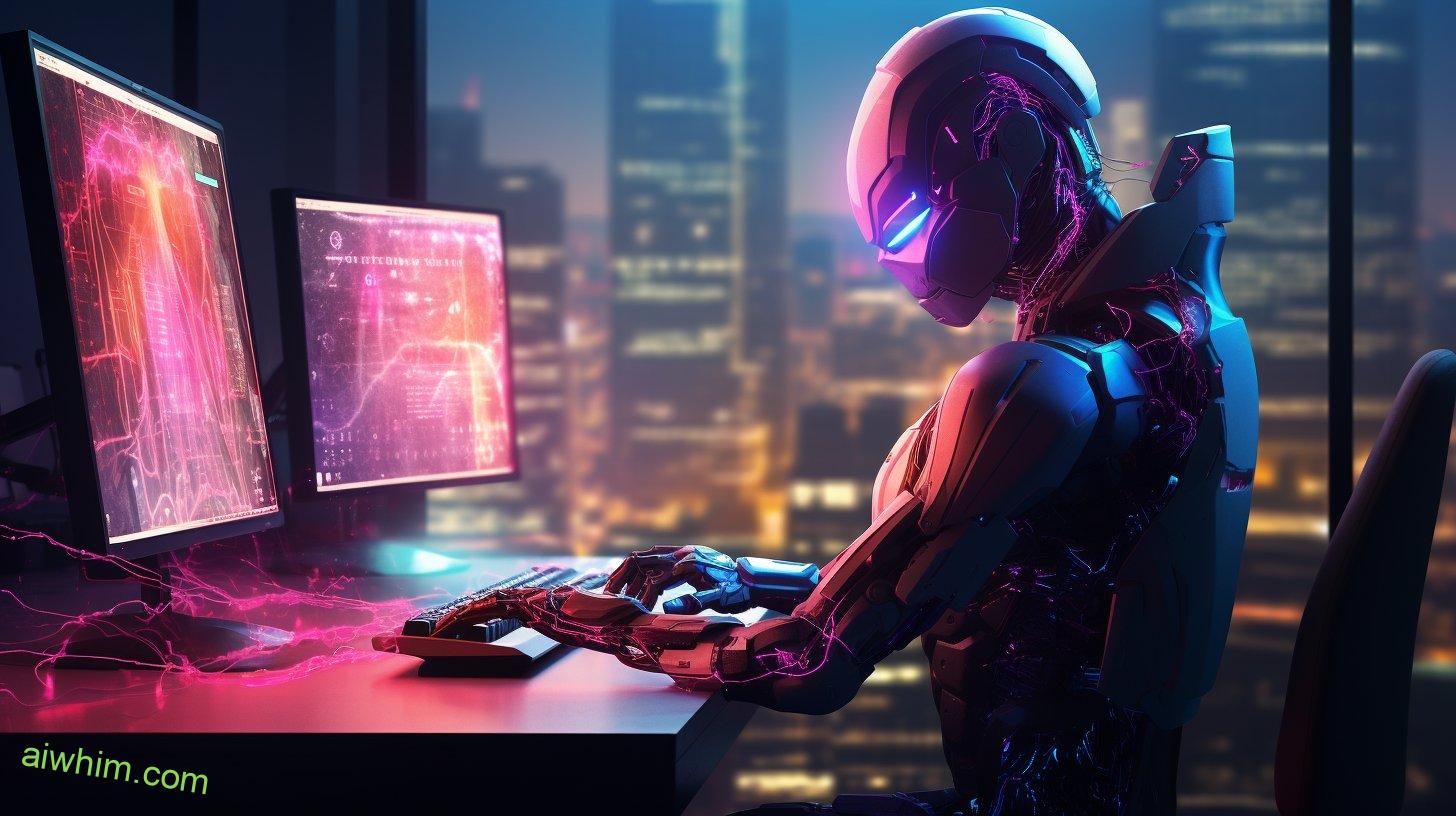
Challenges Faced by Roofers in the AI Era
With the integration of AI technology in the roofing industry, you, as a roofer, are now facing new challenges in the era of automation. While AI has undoubtedly improved efficiency and productivity in many sectors, it has also raised concerns about job opportunities for human workers. As AI becomes more prevalent in roofing, it’s essential to understand the challenges you may encounter and how you can adapt to this changing landscape.
One of the significant challenges faced by roofers in the AI era is the potential displacement of jobs. As AI technology advances, it can perform tasks traditionally done by humans, such as roof inspection and maintenance. This automation could lead to a decrease in the demand for human roofers, posing a threat to job security.
Another challenge is the need to upskill and adapt to new technologies. As AI becomes more integrated into the roofing industry, it’s crucial for roofers to acquire new skills and knowledge to remain relevant in the job market. This could involve learning how to operate and maintain AI-powered machinery or gaining expertise in data analysis and interpretation.
However, it’s important to note that while AI may bring challenges, it also creates new job opportunities. The implementation of AI technology requires skilled professionals to develop, operate, and maintain these systems. By acquiring knowledge in AI-related fields, such as programming or data science, you can position yourself for these emerging job roles in the roofing industry.

AI’s Impact on Roofing Safety Measures
Roofing safety measures have been significantly impacted by the integration of AI technology. As AI continues to evolve and improve, it has brought about several roofing safety advancements that prioritize the well-being of workers and enhance overall efficiency.
Here are some key ways in which AI has revolutionized roofing safety measures:
- AI powered roofing inspections: With the help of AI algorithms, drones equipped with high-resolution cameras can now conduct roof inspections. This eliminates the need for workers to physically climb up roofs, reducing the risk of falls and accidents. AI-powered inspections also allow for more accurate and detailed assessments of the roof’s condition, enabling timely repairs and maintenance.
- Real-time hazard detection: AI technology can analyze data from various sensors and cameras placed on the roof to detect potential hazards in real-time. It can identify issues such as loose tiles, leaks, or unstable structures, alerting workers and preventing accidents before they occur. This proactive approach significantly enhances safety on construction sites.
- Smart safety gear: AI has led to the development of smart safety gear that incorporates sensors and AI algorithms to monitor workers’ movements and detect signs of fatigue or distress. This technology can send alerts to both the worker and supervisors, ensuring immediate assistance and preventing accidents caused by exhaustion or health issues.
- Data-driven safety training: AI-powered systems can collect and analyze data on safety incidents, near misses, and worker behavior to identify patterns and trends. This information can then be used to develop targeted safety training programs that address specific risks and improve worker awareness and compliance.
These advancements in roofing safety measures empower workers with the tools and knowledge to carry out their tasks in a safer environment. By harnessing the power of AI, the roofing industry is taking significant strides towards achieving optimal safety standards and protecting the freedom of workers.
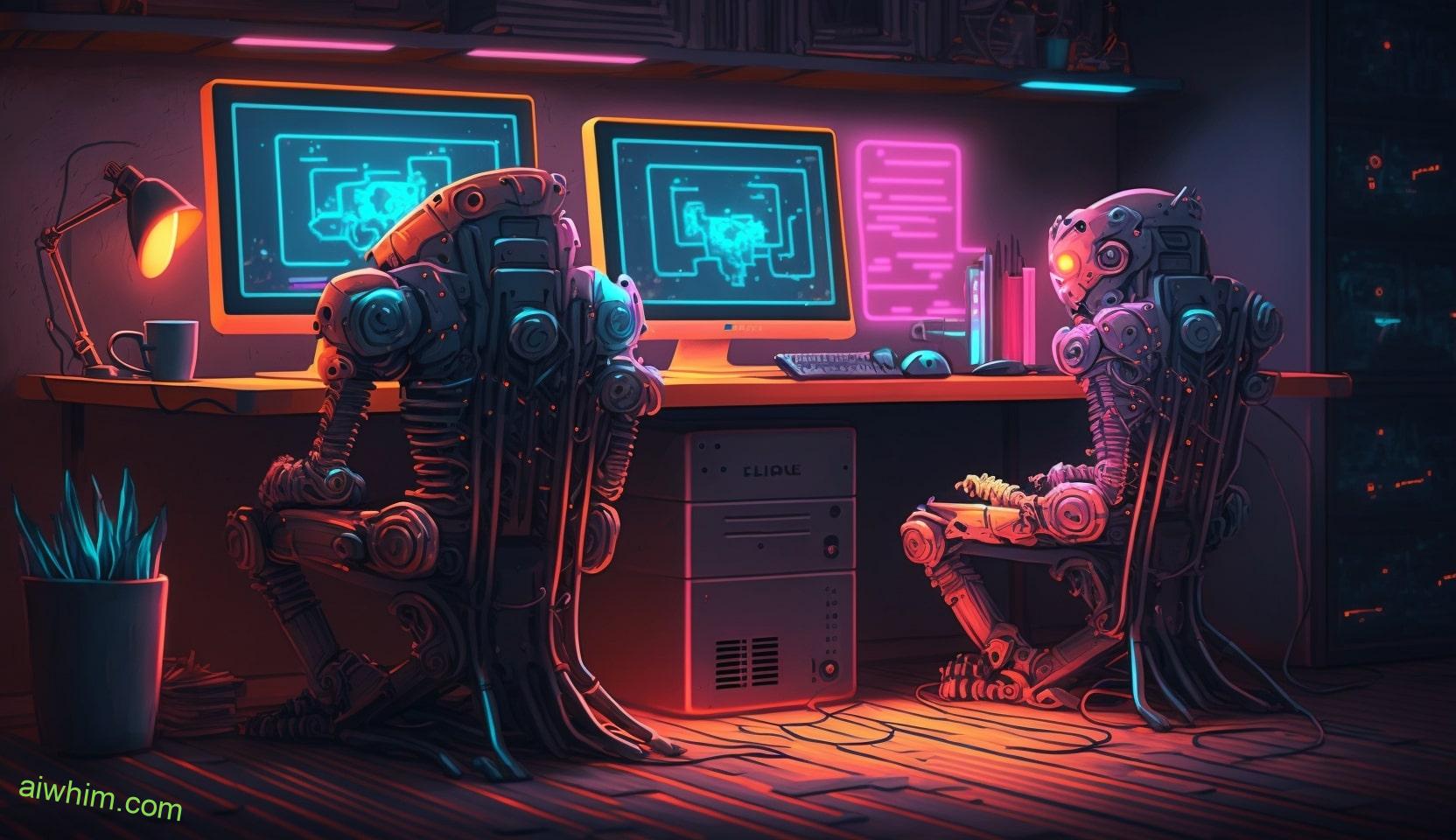
The Cost Effectiveness of AI in Roofing
AI technology in the roofing industry has proven to be cost-effective, providing numerous benefits that enhance efficiency and reduce expenses. The implementation of AI in roofing allows for improved cost efficiency, making it a valuable tool for both contractors and homeowners. By utilizing AI-powered software and algorithms, roofing companies can accurately assess the condition of roofs and identify potential issues before they escalate into costly repairs. This proactive approach not only saves money but also ensures the longevity of the roof.
One of the main advantages of AI implementation in roofing is its ability to optimize material usage. AI algorithms can calculate the exact amount of materials needed for a roofing project, eliminating waste and reducing unnecessary expenses. This precision not only saves money but also benefits the environment by minimizing the production and disposal of excess materials.
Furthermore, AI technology enables contractors to streamline their operations and improve productivity. AI-powered software can automate various tasks, such as scheduling, inventory management, and project tracking, freeing up time for contractors to focus on more critical aspects of their work. This increased efficiency translates into cost savings by reducing labor costs and minimizing errors.
Additionally, AI can aid in the identification of potential cost-saving measures during the roof design phase. By simulating different roofing scenarios and analyzing various factors such as insulation, materials, and energy efficiency, AI can help optimize the design to minimize long-term costs. This level of analysis and optimization would be challenging and time-consuming without AI technology.

Ethical Considerations in Adopting AI in Roofing
When it comes to adopting AI in the roofing industry, there are several ethical implications and societal impacts that should be taken into account. As technology advances, it’s important to consider the potential consequences and ensure that the use of AI aligns with our values of freedom and fairness.
Here are some key points to consider:
- Equity and fairness: AI systems should be designed and implemented in a way that doesn’t discriminate against certain individuals or groups. It’s crucial to ensure that AI algorithms are unbiased and don’t perpetuate existing inequalities in the roofing industry.
- Privacy and data protection: The adoption of AI in roofing may involve the collection and analysis of large amounts of data. It’s important to prioritize the protection of personal information and ensure that data is handled securely and in compliance with relevant privacy regulations.
- Transparency and accountability: AI systems should be transparent in their decision-making processes. It’s important to understand how AI algorithms make decisions and ensure that they can be audited and held accountable for their actions.
- Job displacement: The introduction of AI in the roofing industry may lead to job displacement for human workers. It’s important to consider the impact on workers and provide support and retraining opportunities to ensure a smooth transition.

Strategies for Roofers to Stay Competitive in the AI Age
To remain competitive in the AI age, you must adapt your strategies to capitalize on emerging technologies and stay ahead of the curve. Technological advancements are transforming every industry, including roofing. As AI continues to evolve, it’s essential for roofers to embrace these changes and find ways to incorporate AI into their operations.
One strategy for staying competitive in the AI age is to invest in AI-powered tools and software. These technologies can streamline your workflow, improve accuracy, and enhance productivity. For example, AI-powered drones can be used to conduct roof inspections, saving time and reducing the risk of accidents. Similarly, AI algorithms can analyze data and provide accurate estimates for roofing projects, helping you make informed decisions and improve cost management.
Another important aspect of adapting strategies in the AI age is to focus on skills development. As AI takes over repetitive tasks, it’s crucial for roofers to acquire new skills that complement AI technologies. For instance, learning how to effectively interpret and analyze the data generated by AI algorithms can provide valuable insights and help you make better business decisions. Additionally, developing skills in relationship-building and customer service can give you a competitive edge by offering a personalized experience that AI can’t replicate.
Furthermore, leveraging digital marketing strategies can help you reach a wider audience and attract more customers. Utilize social media platforms, website optimization techniques, and online advertising to showcase your expertise and stand out from the competition.

Frequently Asked Questions
How Has the Rise of AI in the Roofing Industry Affected the Job Market for Roofers?
The rise of AI in the roofing industry has had a significant impact on employment for roofers. While AI can increase efficiency and reduce costs, it also poses a threat to job security.
What Are the Ethical Considerations That Need to Be Taken Into Account When Adopting AI in the Roofing Industry?
When considering the adoption of AI in the roofing industry, it’s important to think about the ethical considerations and privacy concerns. These factors should be taken into account to ensure freedom and protect individuals’ rights.
What Are Some Strategies That Roofers Can Implement to Stay Competitive in the AI Age?
Stay on top of the game in the AI age by embracing roofing innovations. Implement new techniques, tools, and technology to compete in the construction industry. Adapt, innovate, and excel to secure your place in the market.
How Does AI Technology Compare to Traditional Roofing Methods in Terms of Effectiveness and Efficiency?
AI technology in the roofing industry offers benefits like improved accuracy and speed, but it also has limitations. While it can enhance efficiency, it cannot replace the expertise and human touch that roofers provide. The future lies in integrating AI with human skills for optimal results.
What Are Some AI Tools and Software AvAIlable for Use in the Roofing Industry, and How Do They Improve Roofing Efficiency?
Looking to improve your roofing efficiency? AI tools in the roofing industry can be a game-changer. They streamline processes, enhance accuracy, and boost productivity, giving you the freedom to focus on what you do best.

Conclusion
So, in the age of AI, where does that leave roofers?
While AI technology offers numerous advantages in terms of efficiency and cost-effectiveness, it also poses challenges to roofing employment.
However, rather than fearing the rise of AI, roofers can adapt and stay competitive by embracing new technologies, focusing on specialized skills, and providing excellent customer service.
The question is, will you be ready to rise above the competition in the AI age?

